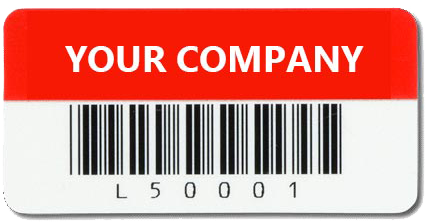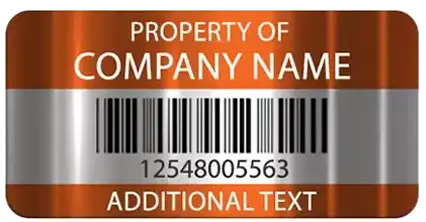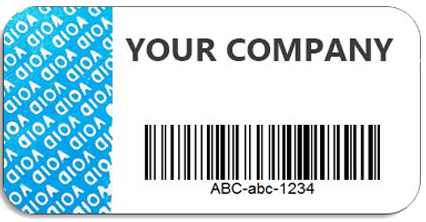Table of Contents
ToggleIntroduction
Asset tags are simple, but important. They help businesses track, manage, and protect their equipment. From laptops to heavy machinery, asset tags keep things organized and secure.
This guide breaks down everything you need to know: types of asset tags, materials, barcodes, NFC options, adhesives, and personalization.
What is an Asset Tag?
An asset tag is a label attached to an item that identifies it. It usually carries a unique ID number, a barcode, or sometimes an NFC chip. Asset tags make inventory management easier and help prevent theft or loss.
Why use Asset Tags?
Track inventory
Deter theft
Speed up audits
Manage maintenance schedules
Simplify insurance claims
Asset Tag Types

1. Poly Asset Labels
Polyester asset labels are popular because they are tough but flexible.
Best for:
Computers
Office furniture
Indoor equipment
Features:
Scratch-resistant
Chemical-resistant
Print custom barcodes, serial numbers, or company logos
Material: Durable polyester film
Finish: Matte or gloss

2. RFID Asset Labels
RFID (Radio Frequency Identification) labels store data that can be read wirelessly.
Best for:
High-value assets
Warehouses
Libraries
Features:
Read multiple tags at once
No direct line of sight needed
Faster audits
Material: Polyester, PVC, or specialized RFID inlays
Finish: Usually matte to avoid reflections that interfere with scanning

3. Foil Asset Labels
Foil asset tags are extremely durable and stick to rough surfaces.
Best for:
Outdoor equipment
Industrial tools
Construction machinery
Features:
Weatherproof
Tear-resistant
Can handle extreme heat and cold
Material: Aluminum or anodized foil
Finish: Metallic or brushed metal look

4. Tamper-Proof Asset Tags
Tamper-proof labels break apart or leave “void” marks when someone tries to remove them.
Best for:
Sensitive equipment
Medical devices
High-security areas
Features:
Deters tampering
Shows visible evidence if disturbed
Material: Destructible vinyl, polyester, or custom “void” films
Finish: Matte or gloss
Other Types Worth Mentioning
Metalphoto Asset Tags: Photographic anodized aluminum tags that last 20+ years even in harsh environments.
NFC Asset Tags: NFC chips embedded into labels for touch-to-read functiona
Asset Labels Barcode & QR Code Options
Barcodes:
1D barcodes: Simple and fast (ex: Code 39, Code 128)
2D barcodes: Hold more info (ex: QR Codes, Data Matrix)
NFC Chips:
Store asset info
Link directly to asset management systems
Scan using smartphones
Personalisation Options For Asset Labels
You can customize asset tags to fit your brand and needs.
Options include:
Company name and logo
Serial numbers or unique IDs
Full-color designs
Custom shapes and sizes
Variable data printing: Every label can have different information, like a different barcode or serial number.
Personalisation Options For Asset Labels
You can customize asset tags to fit your brand and needs.
Options include:
Company name and logo
Serial numbers or unique IDs
Full-color designs
Custom shapes and sizes
Variable data printing: Every label can have different information, like a different barcode or serial number.
Adhesive Options
Choosing the right adhesive is critical.
Common adhesives:
Permanent adhesive: Hard to remove, best for long-term tagging
High-tack adhesive: Grips rough or low-energy surfaces (like plastic bins or textured metal)
Removable adhesive: Temporary tracking without damaging surfaces
Foam adhesive: Fills gaps on uneven surfaces
Tip: Always match the adhesive to the surface and environment where the tag will be used.
Adhesive Options
Things to Consider Before Buying Asset Tags
Surface material: Smooth, rough, flat, or curved?
Environment: Indoors, outdoors, extreme temperatures?
Security level needed: Tamper-evident or basic?
Scan method: Barcode scanner, RFID reader, smartphone?
Volume: How many assets need tagging?
Conclusion
Asset tags are a small investment that can save you time, money, and headaches. Picking the right type, material, and adhesive ensures your assets stay tracked and protected for years.
Whether you need rugged foil labels, smart RFID tracking, or tamper-proof security, there’s an asset tag made for the job.
